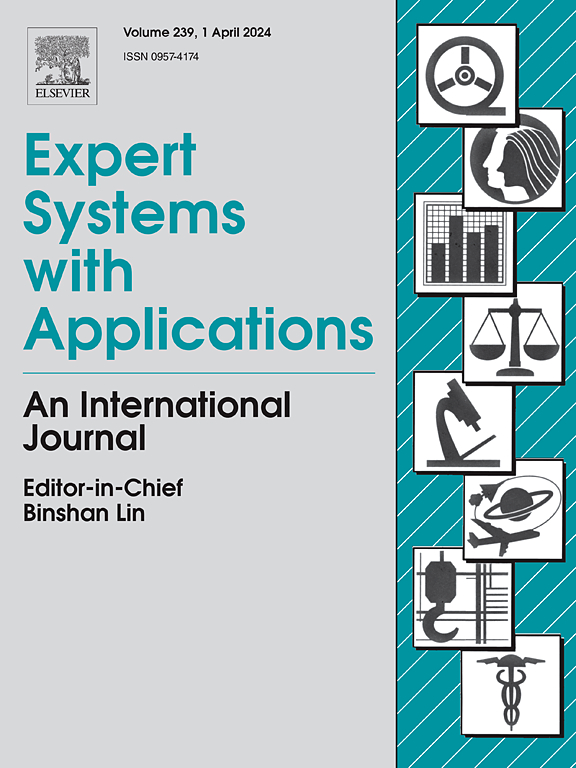基于多通道图卷积的自感知特征融合网络脑障碍诊断
IF 7.5
1区 计算机科学
Q1 COMPUTER SCIENCE, ARTIFICIAL INTELLIGENCE
引用次数: 0
摘要
目前的脑疾病诊断方法受到单一模板或单一模式的限制,忽视了多尺度特征之间的潜在相关性和非成像数据的重要性。它导致从脑功能连接网络(BFCNs)中提取判别特征的效率低下,并且在仅依赖非成像数据时无法准确地建立学科间关联。为了解决这些问题,我们提出了一种新的基于多通道图卷积的自感知特征融合网络(MCGC-SPFFN)。具体而言,利用多模板数据构建BFCNs,提取多尺度特征。MGMC模块旨在基于不同模板的表型数据和互补信息来探索主体间的相似性。它由一个参数共享策略的自适应边缘学习网络(AELN)组成。多通道图卷积网络(GCN)对节点特征进行聚合。在此基础上,设计了自感知特征融合(SPFF)模块,通过准确性加权投票策略和多头交叉注意机制实现特征融合。采用通道多样性和尺度相关约束,深入研究特征之间的潜在关系。实验结果表明,该方法诊断自闭症谱系障碍(ASD)的准确率为81.2%,诊断重度抑郁症(MDD)的准确率为60.1%。实验结果表明,MCGC-SPFFN能够同时从多模板、多模态数据中提取特征,并优于一些先进的方法。MCGC-SPFFN的源代码可从https://github.com/XL-Jiang/MCGC-SPFFN获得。本文章由计算机程序翻译,如有差异,请以英文原文为准。
Self-perceptive feature fusion network with multi-channel graph convolution for brain disorder diagnosis
Current brain disorder diagnostic approaches are constrained by a single template or a single modality, neglecting the potential correlations between multi-scale features and the importance of non-imaging data. It results in inefficiently extraction of discriminative features from brain functional connectivity networks (BFCNs), and fails to inaccurately establish inter-subject associations when relying solely on non-imaging data. To address these issues, we proposed a novel self-perceptive feature fusion network with multi-channel graph convolution (MCGC-SPFFN) for brain disorders. Specifically, BFCNs were constructed with multi-template data to extract multi-scale features. A MGMC module was designed to explore inter-subject similarities based on phenotypic data and complementary information across distinct templates. It consisted of an adaptive edge learning network (AELN) with a parameter-sharing strategy. The multi-channel graph convolutional network (GCN) aggregated the node features. Furthermore, a self-perceptive feature fusion (SPFF) module was designed to fuse the features by the accuracy-weighted voting strategy and the multi-head cross-attention mechanism. The channel diversity and scale correlation constraints were implemented to thoroughly investigate the latent relationships among features. Experimental results show it achieves an accuracy of 81.2% for autism spectrum disorder (ASD) and an accuracy of 60.1% for major depressive disorder (MDD). It was validated that MCGC-SPFFN can simultaneously extract features from multi-template and multi-modality data, and outperformed some advanced methods. The source code for MCGC-SPFFN is available at https://github.com/XL-Jiang/MCGC-SPFFN.
求助全文
通过发布文献求助,成功后即可免费获取论文全文。
去求助
来源期刊

Expert Systems with Applications
工程技术-工程:电子与电气
CiteScore
13.80
自引率
10.60%
发文量
2045
审稿时长
8.7 months
期刊介绍:
Expert Systems With Applications is an international journal dedicated to the exchange of information on expert and intelligent systems used globally in industry, government, and universities. The journal emphasizes original papers covering the design, development, testing, implementation, and management of these systems, offering practical guidelines. It spans various sectors such as finance, engineering, marketing, law, project management, information management, medicine, and more. The journal also welcomes papers on multi-agent systems, knowledge management, neural networks, knowledge discovery, data mining, and other related areas, excluding applications to military/defense systems.
 求助内容:
求助内容: 应助结果提醒方式:
应助结果提醒方式:


